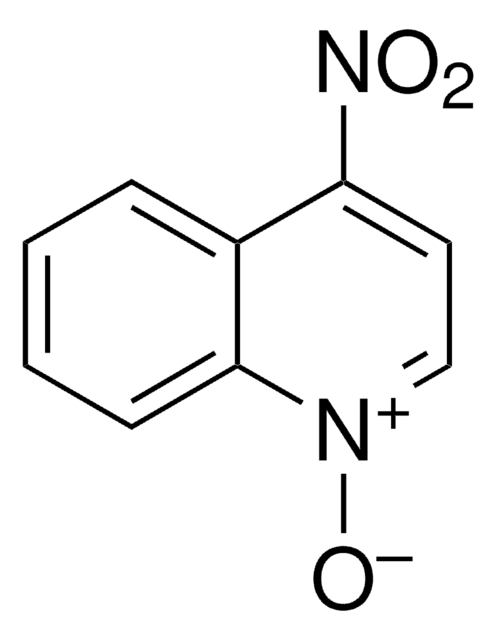D3254
7,12-Dimethylbenz[a]anthracene
≥95%
Sinónimos:
1,4-Dimethyl-2,3-benzophenanthrene, 9,10-Dimethyl-1,2-benzanthracene, DMBA
About This Item
Productos recomendados
assay
≥95%
form
powder
mp
122-123 °C (lit.)
application(s)
metabolomics
vitamins, nutraceuticals, and natural products
SMILES string
Cc1c2ccccc2c(C)c3c1ccc4ccccc34
InChI
1S/C20H16/c1-13-16-8-5-6-9-17(16)14(2)20-18(13)12-11-15-7-3-4-10-19(15)20/h3-12H,1-2H3
InChI key
ARSRBNBHOADGJU-UHFFFAOYSA-N
¿Está buscando productos similares? Visita Guía de comparación de productos
General description
Application
- to study the effects of Cimicifuga racemosa (CR) extract on the growth of mammary tumor induced by 7,12-Dimethylbenz[a]anthracene
- in the study to compare the anti-carcinogenic properties of four red wine polyphenols as an initiator to cause skin cancer in CD-1 mouse model
- to induce epithelial carcinogenicity in order to study the apoptotic, proliferating and p12doc-1 profiles of normal, hyperplastic, dysplastic and malignant oral epithelium in the cheek pouch of the Syrian hamster
- to cause mammary tumors to examine the causes and prevention of triacylglycerol accumulation in rat liver due to tamoxifen
Biochem/physiol Actions
signalword
Danger
hcodes
Hazard Classifications
Acute Tox. 4 Oral - Carc. 1B
Storage Class
6.1C - Combustible acute toxic Cat.3 / toxic compounds or compounds which causing chronic effects
wgk_germany
WGK 3
ppe
Eyeshields, Faceshields, Gloves, type P3 (EN 143) respirator cartridges
Certificados de análisis (COA)
Busque Certificados de análisis (COA) introduciendo el número de lote del producto. Los números de lote se encuentran en la etiqueta del producto después de las palabras «Lot» o «Batch»
¿Ya tiene este producto?
Encuentre la documentación para los productos que ha comprado recientemente en la Biblioteca de documentos.
Los clientes también vieron
Artículos
Cancer research has revealed that the classical model of carcinogenesis, a three step process consisting of initiation, promotion, and progression, is not complete.
Nuestro equipo de científicos tiene experiencia en todas las áreas de investigación: Ciencias de la vida, Ciencia de los materiales, Síntesis química, Cromatografía, Analítica y muchas otras.
Póngase en contacto con el Servicio técnico

![Benzo[a]pyrene ≥96% (HPLC)](/deepweb/assets/sigmaaldrich/product/structures/253/820/be96d879-1811-46c0-8f11-612019691c2d/640/be96d879-1811-46c0-8f11-612019691c2d.png)





